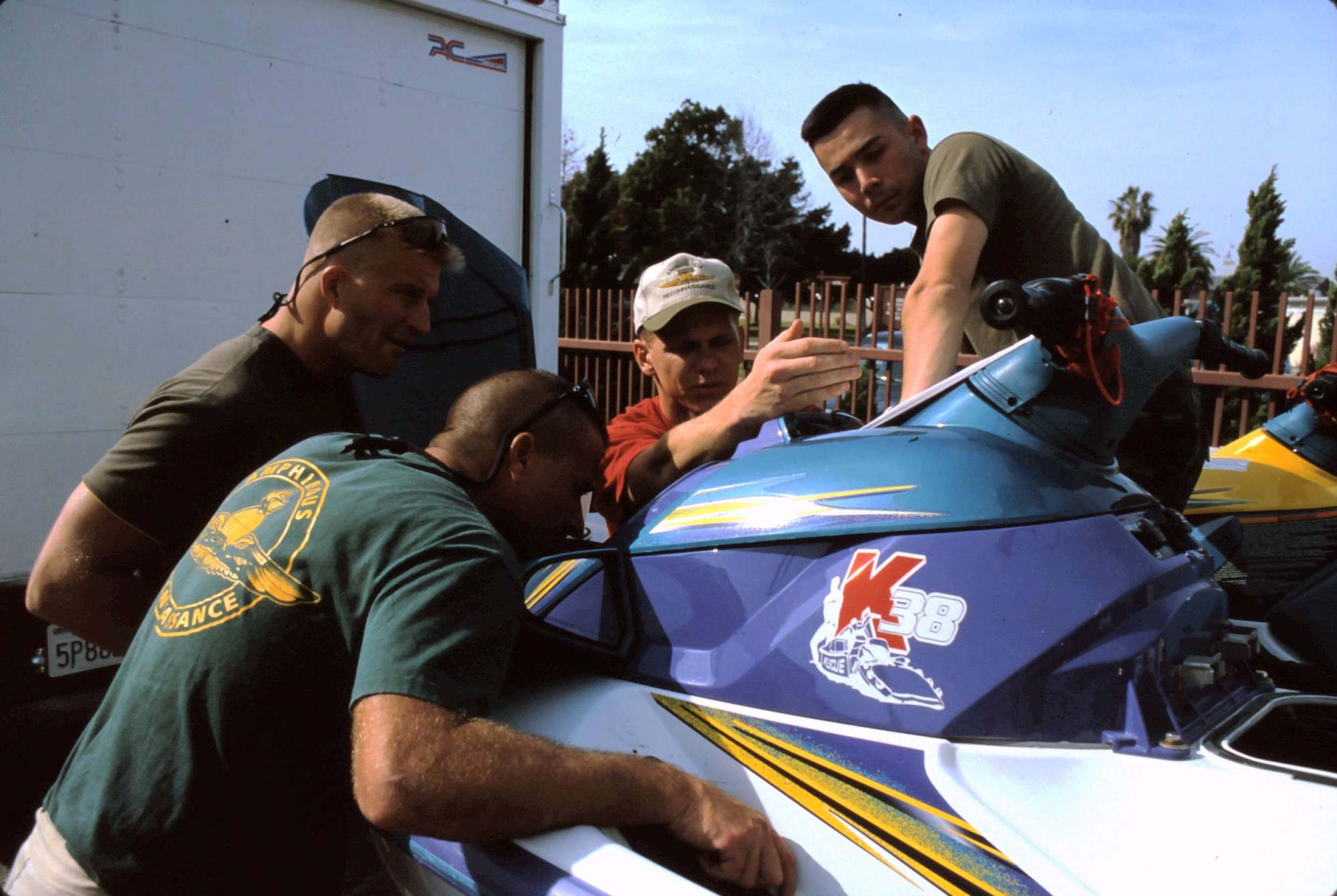Know Your Boat
Do you have an owner’s manual for your Rescue Water Craft? Where is it? When did you last pierce its pages of infinite wisdom to remind yourself how great a caretaker you are? How important is your mission? If you can read, you can maintain and every program needs a matching Original Equipment Manufacturer owner’s manual to the:
- Make
- Model
- Year of Production
FLUSH ME
Your Rescue Water Craft needs a drink too, it’s called a fresh water rinse. You need to wash the interior compartments (yes the engine compartment) and the exterior.
Then you most into the guts, the belly of the beast and it’s time to flush the water cooling exhaust system. You need a garden hose, perhaps some Salt Away® or Dawn Detergent drops and a few minutes of your time.
Corrosion can result from saltwater, brackish water from a lack of flushing the exhaust system. The salt crystals that remain when the water dries out can collect around fittings and elbow brass turns for the water lines and clog, reduce or restrict water flow. This can result in engine overheating or engine damage.
Fresh water engine exhaust flushing is just as important due to sediment or debris having the same negative effect internally.
So flush away and refer to your owner’s manual!
What can you do to comply?
- Review all of your log books.
- Be familiar with the checklists and complete all form fields.
- Make sure you understand how the checklists apply to the equipment you are using so your reviews are effective and not just a habit to fill in the blank.
- Inspect your PPE and remove it from service if needed.
- Be fearless in removing any gear or equipment from operational use with the control measures in place by your protocols and procedures.
PRACTICING EFFECTIVE BASICS
There is a time not to go. You may discover that you will have to take a RWC out of service and that coverage will be significantly reduced. Have a backup plan for downed equipment and make sure you have the budget to maintain efficient operations.
Checklist help insure your program. They are reminders of requirements that rely upon your mental and physical action. Practicing effective basics of the fundamentals will allow you to have the capability to catch mistakes before they become mishaps.
SPRAY ME
As if water wasn’t enough, you need to spray down all metal components of the interior of your craft with the recommended Original Equipment Manufacturer’s anti-corrosion spray. Don’t grab any item, some of them can ruin your bank account, or take your life!
Rubber can only have certain rust inhibitors spray on their surface otherwise they face cracking or blowing off under pressure from their connecting points resulting in a sunk Personal Water Craft. Boo Hoo! You don’t want to go to that party!

USMC 1996 Water Craft Preventative Maintenance
It'a all About Prevention for Rescue Water Craft Safety
LUBRICATE ME
Yes, rust and corrosion is looking for a place to set anchor. You need to know the periodic grease points that are required for your particular Rescue Water Craft. Use the recommended Marine Grade grease and follow up the hourly maintenance schedule on key points to keep your boat functional underway. Items that are moving parts are under a lot of stress, and even more stress when we use a Towable Aquaplane Device (TAD) known as a Rescue Board. The original trim design of Personal Water Craft are significantly offset in some use situations, so be good to your boat and it will be good to you!
INSPECT ME
Do you know what you are looking at? Do you have a complimentary post operations Rescue Water Craft check list you can evaluate the needs of your boat? Or are you just checking the little boxes so you can go home and close the doors?
Inspection means safety. Knowing what to look for, when to take a boat out of service for repair can stop the liability dragon.
FEED ME
When your program has no policy on preventative maintenance schedule, it’s only a matter of time! The chain reaction of causation is waiting to raise its hand. Your Rescue Water Craft Owner’s Manual should look worn and torn from repeated referencing. If its’ not, then you have problems and if you don’t have one, why not?
Feed the hand that feeds you. If your Rescue Water Craft program is lacking just these 5 simple steps, you do not have a marine unit, you have a disaster in the making.
• Grow your program by first securing an owner’s manual.
• Revise your checklist
• Ensure mandatory records are kept
• Adhere to the maintenance schedule
• Take a boat out of service when problems arise or are suspected
K38
Shawn Alladio – 1.12.2018
Shawn cares most about her community and the culture surrounding the safety of event service providers and Rescue Water Craft operators, working hard and dedicated towards protecting their reputation, distributing safety information and continuing to train these amazing individuals to the highest standards of care.
